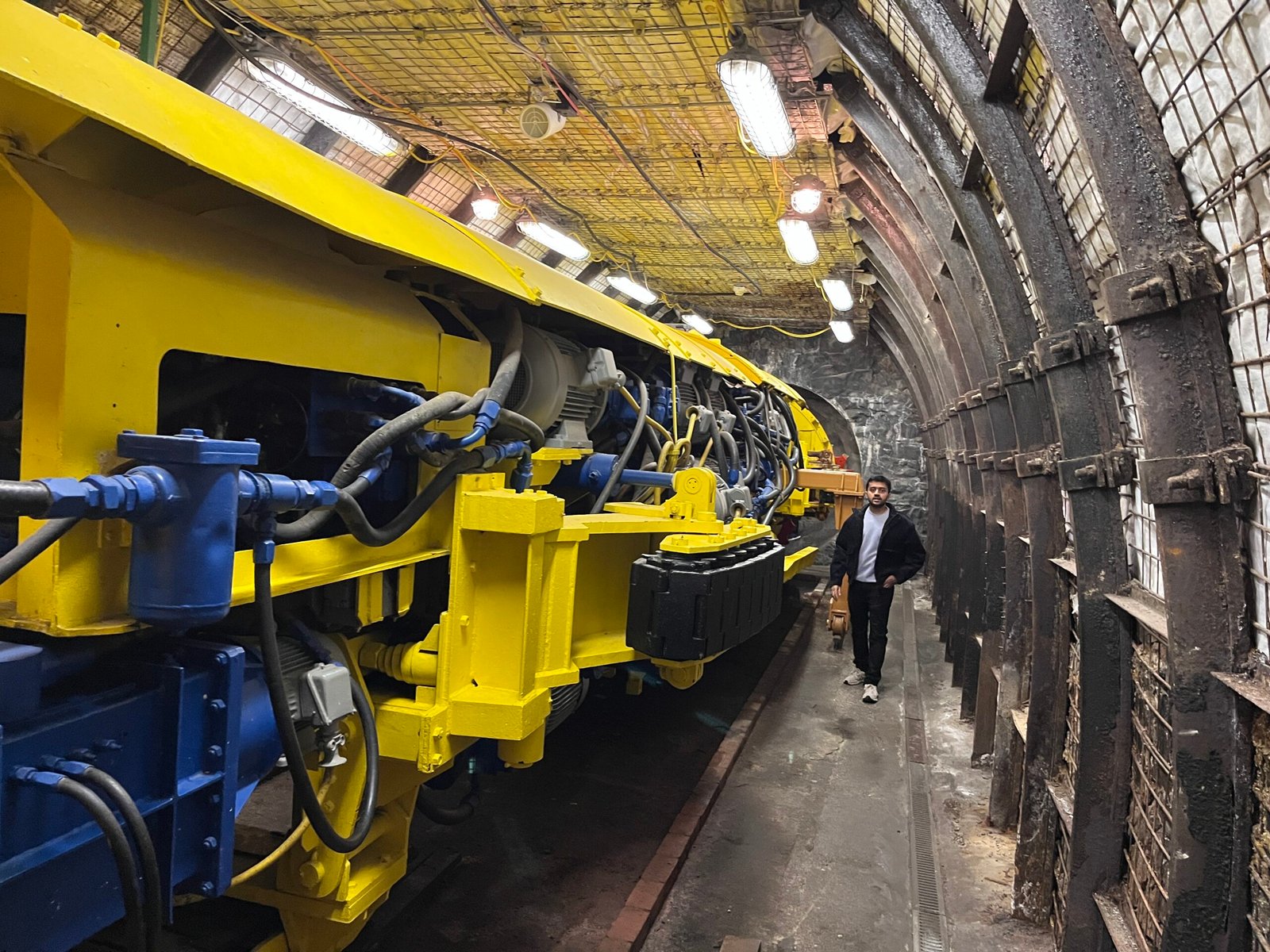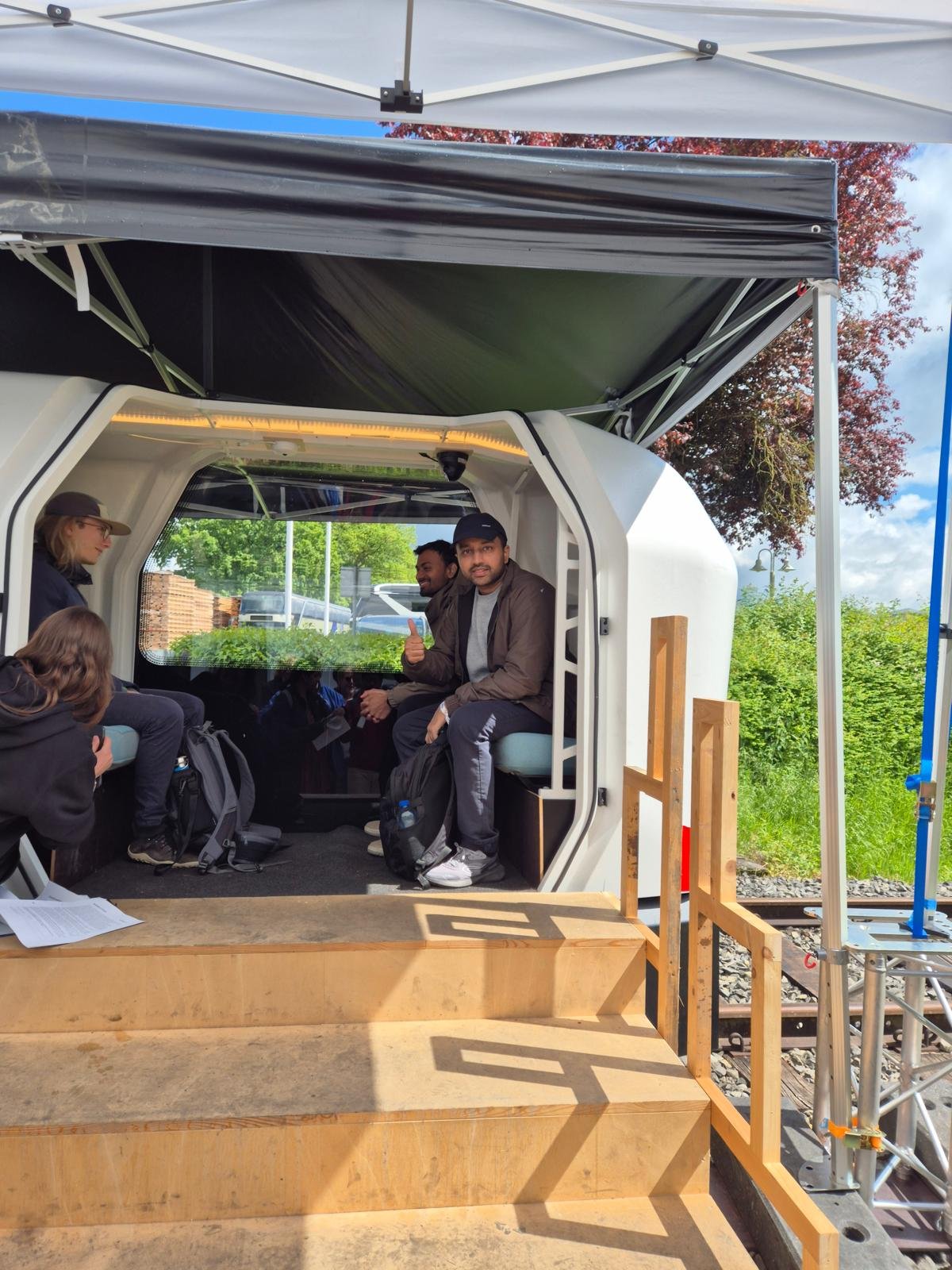When we think about innovation in transportation, it’s usually the cities that come to mind—self-driving taxis, high-speed trains, maybe a new app-based scooter system. Rural areas, on the other hand, often remain an afterthought. Yet these are the places where access to mobility can make the most tangible difference.

Earlier this year, I joined a university-organized visit to Lemgo, a town in northwest Germany, to see a transport concept called the Monocab. I hadn’t heard much about it beforehand—just a mention of autonomous cabins and old railway lines being reused. But by the end of that visit, I found myself reflecting not just on a prototype, but on the broader question of how we move people in places most mobility systems tend to ignore.
Breathing Life into Abandoned Rails
Germany, like many countries, has an extensive network of rural railway lines that were once the lifeblood of small towns and villages. Over the decades, as car ownership rose and urbanization accelerated, many of these lines were abandoned. What’s left are unused tracks—still there, often overgrown, but structurally intact.
The Monocab project builds on a bold idea: why not reuse this forgotten infrastructure in a smarter, lighter, more adaptable way? Instead of traditional trains that require conductors, schedules, and high ridership, the Monocab is a small, electric, self-driving cabin that runs on a single rail. It’s designed to work on-demand, responding to passenger requests via an app.
Its most notable feature is that it uses each rail of a traditional two-rail track for a separate direction of travel. The cabins are narrow and compact, so two can pass each other even without doubling the track. The system is fully autonomous and powered by clean energy, with space for six passengers and wheelchair access.
First Impressions: A Practical Vision


The prototype itself is visually striking—streamlined and modern, like a cross between a tram and a pod. During our visit, we were guided through a warehouse where the Monocab was housed. The team welcomed us with genuine enthusiasm, eager to answer questions from both curious students and those with technical backgrounds.


Before the demo ride, we signed consent forms. Cameras inside the cabin would record our facial expressions, part of an AI-driven effort to study passenger comfort and response during transit.
For safety reasons, the ride we experienced wasn’t fully autonomous. The gyroscopic self-balancing system was turned off, and the vehicle ran on a support rail. Still, the cabin moved smoothly, silently gliding along the track. It felt more like being in an elevator than a train—calm, contained, and quietly futuristic.


Design Intelligence: Small Details, Big Impact
What really stood out were the reaction disks—mechanical gyros that allow the Monocab to balance itself while moving on a single rail. It’s a clever solution to a tough problem. Traditional trains are stable because of their wide base; the Monocab achieves similar stability using compact, responsive control systems.

From an engineering perspective, this minimalism is impressive. The smaller footprint reduces energy needs and allows the system to be deployed on tracks with tight curves or limited structural integrity. It’s transport scaled to rural life—not oversized, not overengineered, but just enough.
Potential Benefits

The Monocab could solve a real problem in rural regions: the lack of flexible, affordable, and frequent public transit. In many small communities, the choice is either owning a car or being stranded. Buses and trains that do run often aren’t aligned with actual daily needs—they operate on fixed routes and limited schedules, regardless of how many people use them.
Monocab flips this model. Because the system is on-demand, it doesn’t waste energy running empty. A fleet of cabins can respond dynamically to ride requests, making it feasible to serve low-density populations without high operational costs.
Environmental impact is another advantage. The vehicle is electric and lightweight, meaning lower emissions and less infrastructure wear. By reusing existing rail corridors, there’s no need for new land development or heavy construction—just smart adaptation of what’s already in place.
Limitations and Risks
Still, as with any new system, there are challenges. For one, the model assumes that abandoned tracks are still usable. In some areas, rails may have been removed, degraded, or obstructed. In such cases, even a low-cost solution like Monocab could face costly restoration requirements.
Another concern is system reliability. The single-track operation relies on intelligent scheduling and real-time vehicle coordination. If these systems fail or are disrupted, service could be delayed or suspended. Redundancy and safety protocols will need to be built in at every level.
Public trust also matters. For residents unfamiliar or uncomfortable with autonomous transport, especially in older age groups, the idea of stepping into a driverless pod could be daunting. Adoption will likely require strong community engagement, pilot phases, and perhaps hybrid oversight models with remote operators.
Then there’s the regulatory gray area. Monocab is neither a train nor a tram, so integrating it into existing legal frameworks for transit may be complex. Questions of insurance, safety certification, and data governance will all have to be addressed.
International Applicability
While designed with Germany’s rural regions in mind, the Monocab concept could be adapted for use in other countries—particularly where railway infrastructure is underused or obsolete. In parts of Eastern Europe, for example, similar demographic and geographic conditions exist.
In the Global South, the opportunity is more complex. While lightweight, low-cost systems are attractive, they would need to be redesigned for rougher environments, unstable power grids, and limited digital connectivity. Still, the principle of repurposing existing infrastructure with scalable, autonomous units remains compelling.
Local context would determine viability. In some places, an ultra-basic version of Monocab—solar-powered, manually dispatched, maybe even modular—could offer lifelines to remote communities. The underlying idea is flexible enough to inspire region-specific solutions.
Final Thoughts
The Monocab isn’t trying to solve all the world’s transport problems. But it does something rare in the world of mobility—it looks where others don’t. By focusing on low-density, under-served areas and finding value in forgotten infrastructure, it offers a model of progress that’s subtle, smart, and deeply needed.
What I saw in Lemgo wasn’t just a prototype. It was a reminder that innovation doesn’t always have to be disruptive in scale. Sometimes, it’s about working with what we already have, but doing it better.





Leave a Reply